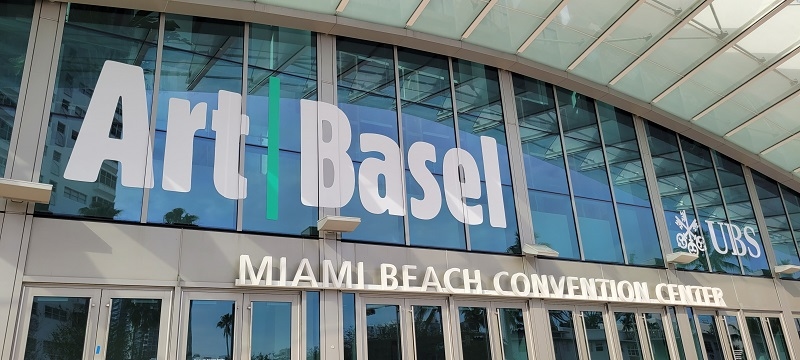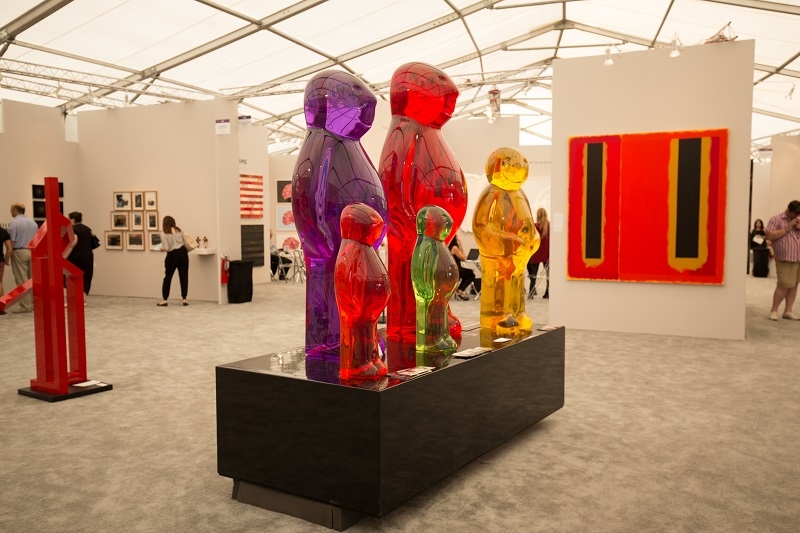
There are plenty of art fairs in the world, but only one gets whispered about with that mix of awe and curiosity. Collectors plan their calendars around it. Celebrities drop in, usually chased by photographers. Students save up just to buy a day ticket, hoping for inspiration. That’s Art Basel, a fair that has grown so big it now feels less like an event and more like a season of its own.
It all began in 1970 in Switzerland. Three local gallerists thought, “why not bring the best of contemporary art into one space so people don’t have to travel the globe to see it?” What sounded like a risky idea at the time—few believed Basel was the right stage—quickly proved otherwise. The very first edition drew thousands. The history of art basel since then has been one of constant growth.
Over the decades, the fair has evolved far beyond its origins. It’s no longer just a meeting of European galleries. It’s now a network of fairs in Switzerland, Miami Beach, and Hong Kong. Each city puts its own flavour into it, but the heart remains the same: a chance to connect people and art in ways that feel larger than life.
So, why is art basel so famous when there are other fairs? The honest answer is a mix of timing, ambition, and luck. From the start, it attracted serious galleries who wanted to be seen there. That drew collectors. And when the collectors showed up, the media followed. Before long, Basel became shorthand for prestige.
But it isn’t only about big money sales, though those headlines certainly make noise. It’s also about atmosphere. Walking through the fair can feel electric. One moment you’re in front of a Picasso, the next you’re staring at a digital installation that responds to your heartbeat. It’s that clash of old and new, safe and experimental, that keeps people coming back.
Practical question—when is art basel? The original Basel edition is held in June, right as the European summer brings long days and a relaxed mood. Miami Beach hosts its edition in early December, often described as part art fair, part beach party. Hong Kong’s version happens in March, drawing in collectors from across Asia and beyond.
Each city gives the fair a slightly different identity. Miami feels glamorous, sometimes chaotic, with yachts, fashion parties, and celebrity sightings. Basel is more restrained, academic even, with an emphasis on history and scholarship. Hong Kong feels fresh, fast-moving, with a strong tilt toward technology and younger voices.
Everyone is already talking about Art Basel 2025. After years of experimenting with digital add-ons, the fair is returning with an even bigger focus on in-person experiences. Expect immersive installations that swallow whole rooms, virtual reality spaces that blur the line between visitor and artwork, and of course, the traditional sectors showcasing painting, sculpture, and photography.
There’s also a noticeable push to bring in voices from regions long underrepresented in the art market. Collectors are paying attention to Africa, South America, and Southeast Asia in ways they didn’t a decade ago. For visitors, that means more diversity and fresher perspectives.
The phrase Basel art fair might make you picture rows of paintings, but the reality is much wider. Performance art has taken root, with live acts surprising visitors who expect only visual work. Video installations, sculptures, and massive outdoor works spill beyond the halls.
That mix means the fair attracts more than wealthy collectors. Students, families, casual tourists—they all wander through, curious to see what the fuss is about. In many ways, Basel stretches the definition of art itself, nudging everyone to think about what counts as art and what doesn’t.
Do Checkout: What is Resin Art and Why People Love it?

For galleries and artists, being selected for art basel is like a stamp of approval. It’s competitive. Not everyone gets in. Those who do suddenly find themselves in front of the most influential eyes in the art world.
Emerging artists in particular can find their careers transformed. A single work noticed by the right collector can shift an artist from obscurity to global demand. That level of exposure doesn’t come often, and it’s part of why the fair continues to matter.
Something people often miss when they talk about the fair is how the host cities transform. During the week of the fair, Basel’s streets are filled with late-night gallery openings, warehouse shows, and pop-up exhibitions. Miami Beach becomes a swirl of art and nightlife, where it’s hard to tell if the party is the main act or the fair itself.
These unofficial art basel events play a crucial role. They make the fair feel bigger than its official halls, spilling into public spaces and turning the city into one big stage. Even locals who never set foot inside the main fair feel the ripple.
Not everything is glowing. Critics point to the high costs for galleries to participate, which can squeeze out smaller players. Some argue that the fair is too focused on money, with million-dollar deals overshadowing genuine artistic discovery.
Accessibility is another issue. Tickets are expensive, and the VIP culture can leave ordinary visitors feeling like outsiders. These critiques raise real questions about the balance between commerce and culture. But supporters argue that without those big sales, many smaller projects around the world wouldn’t get funded.
If you’re thinking of going, a word of advice. Don’t try to see everything. The fair is huge. You’ll wear yourself out if you rush. Instead, pick a couple of sections and take your time. Let yourself be surprised.
Talk to gallery staff. Even if you’re not buying, they often enjoy sharing insights about the work. And yes, wear comfortable shoes. You’ll walk more than you expect.
In a world where you can scroll through a thousand images on Instagram in seconds, you might wonder—do we still need physical fairs? The answer, at least for now, is yes. Art is more than pixels. Standing in front of a work, seeing its texture, scale, and presence, is an experience that can’t be replicated on a screen.
Art Basel gives that experience to thousands in one place. It creates conversations, sparks debates, and offers the chance to discover something new. That’s what keeps it relevant, despite the criticism.
Read More: Top 9 Famous African Artists Making a Global Impact in 2025
The history of art basel shows a fair that refuses to stay still. From its early days in Switzerland to its global reach today, it has continually reinvented itself. And with Art Basel 2025 promising even more immersive and diverse work, its influence is unlikely to fade anytime soon.
For collectors, it’s still a marketplace. For artists, it’s a dream stage. For visitors, it’s a chance to feel part of something bigger. Maybe that’s the secret: Basel isn’t just about art. It’s about the way art brings people together—curious, excited, sometimes overwhelmed, but always engaged.
This content was created by AI